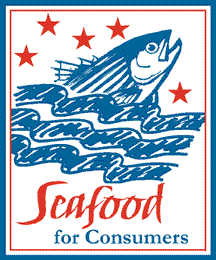

 |
 |

| The rather lengthy interval since the last FishNet was due to the coincident occurrence of several events. First, we are in the process of expanding FishNet to upwards of 2,500 recipients and had to add on, figure out and break in additional hardware and software. Then some important New Jersey issues - one of which will result in the non-fishing citizens of the State finally being permitted to enjoy fresh striped bass harvested from their coastal waters (visit the NJ Fishing website www.fishingnj.org for details) - required the temporary diversion of some of our resources. However, we’re back on track, and back with some embellishments to the system which we will detail in the next edition. Thank you. |
One of the factors most important to the future of commercial fishing is the question of whether the individual coastal states and the Federal government can develop rational and balanced marine resource management and coastal development policies. At this point they haven’t been able to. While there has been some movement in that direction, it doesn’t take more than a casual acquaintance with fisheries issues or a drive along ten or twenty miles of coastline anywhere in the continental United States (right behind a “sport utility vehicle” towing two jet skis would be most appropriate) to know we’ve got a long way to go. As a somewhat perverse result of this lack of coherent policies, over the last few years any suggestions that seafood harvesting methods can be improved, fishermen can work with more efficiency, new fisheries can be developed or existing fisheries expanded have been met with fierce opposition; opposition unfailingly originating from members of a coalition of groups that, regardless of their original charters, can best be characterized today as anti-fishing.
Resource management decisions with overwhelming impacts on working fishermen, the communities they belong to and the businesses they support are increasingly being made as a response to the misinformed or manipulated public opinion resulting from the activities of these anti-fishing groups and individuals. However, fishing and related businesses aren’t the only ones paying the price. Restaurateurs and health conscious consumers in the developed nations and the increasingly hungry populations of the less protein-rich areas of the world are all paying as well.
There are a number of factors that have contributed significantly to the present situation regarding our fisheries. The listing we offer here isn’t meant to be exhaustive, but it does include issues that anyone interested in fisheries or coastal policies should be familiar with. We’ll offer some possible solutions in the next FishNet.
The willingness of anti-fishing groups to manipulate reality to support particular positions:
Coastal and oceanic ecosystems are both complex and dynamic, and are
influenced by many natural and anthropogenic factors. We haven’t been able
to identify, let alone predict or control, most of these factors. In spite
of this, the groups and individuals that are intent on attacking working
fishermen at every opportunity unfailingly manage to blame fishing-related
activities for every perturbation, natural or man-made, in what they claim
is the natural order in the oceans. They are aided in their attacks by
a fisheries management system that can’t manage anything other than fishing.
| “For most of those who spread phony statistics or make wildly inaccurate predictions about the probable effects of public policy, there is no downside. They are never called to account; their bungles are forgotten, and they are left free to fudge the numbers again.” David Boldt in Agenda setters paint pictures of doom and gloom by the numbers, The Philadelphia Inquirer, June 2, 1998. |
The “villainization” of fishermen:
From somewhere near the beginning of this decade, the public opinion of working fisherman has been steadily eroded. From any objective perspective, the reasoning behind this is obscure. Every year there are less fishermen complying with more management-imposed restrictions, catching fewer fish in an increasingly sustainable manner. In spite of this, there is an increasing anti-fishing clamor, and it always originates from and is buoyed by particular segments of the environmental and recreational angling communities.
(A related issue is the misleading characterization of working fishermen as seafood consumers rather than the first link in a chain that gets seafood from the oceans to the real consumers. Due to what is undoubtedly some more “obscure” reasoning, consumers - and their interests - tend to get purposefully left out of any fisheries discussions.)
The continuing development
of coastal areas:
 The
second half of this century has seen a continuous and accelerating shift
of the population to the coastlines. Unfortunately, the people when shifting
are usually accompanied by 6,000 pound GVW sports utility vehicles, 200+
horsepower outboard motors, 1200 cc personal watercraft, strip malls, tee
shirt shops, “lawn care” services, central plumbing, household pets and
all the other cultural artifacts that are generally considered to be slightly
less than friendly to the neighborhood estuary. Estuaries, and the water
flowing through them, are tremenduously important to the health of the
inshore and near-shore ecosystems, but we’re still destroying or degrading
them at an alarming rate.
The
second half of this century has seen a continuous and accelerating shift
of the population to the coastlines. Unfortunately, the people when shifting
are usually accompanied by 6,000 pound GVW sports utility vehicles, 200+
horsepower outboard motors, 1200 cc personal watercraft, strip malls, tee
shirt shops, “lawn care” services, central plumbing, household pets and
all the other cultural artifacts that are generally considered to be slightly
less than friendly to the neighborhood estuary. Estuaries, and the water
flowing through them, are tremenduously important to the health of the
inshore and near-shore ecosystems, but we’re still destroying or degrading
them at an alarming rate.
The unrestrained growth of recreational boating:
Virtually all of the watercraft sold for recreational use today are made of fiber reinforced plastic (aka “fiberglass”). One of their most notable characteristics is that about the only way to get rid of them is to burn them - a not-too-common occurence on the water. In boat terms, they are immortal. Hence the hundreds of thousands of sportsfishing boats, personal watercraft, cruisers, luxury yachts and ski boats that are sold each year are added to a huge fleet already on the water. Imagine what it would be like if automobiles remained operational for thirty-plus years and there were no restrictions on who could use them and few on how they could be used. We have an on-the-water equivalent.
Unfortunately, most boating use is on the vitally important estuaries that are already reeling from the afflictions brought about by the mass population movement to the coast.
The dependence of fisheries management agencies and personnel on recreational angling and boating expenditures:
The Wallop-Breaux Act imposes a “tax” on the sale of recreational angling
and boating equipment and recreational boating fuel. The revenues collected
are distributed to state fisheries agencies, based on the amount of recreational
boating/angling activities in that state’s waters. Since the program was
started, over $3 billion have been distributed to the state agencies. Bureaucracies
being what they are, it’s impossible to imagine that this doesn’t encourage
policy recommendations supporting the expansion of recreational angling/boating
at the expense of competing activities - such as commercial harvesting
- that aren’t accompanied by such direct fiscal incentives. Simply stated,
a state fisheries agency that allocates more fish to recreational anglers
(and less to the non-fishing public) will generate increased recreational
boating/angling expenditures and a corresponding increase in the size of
its budget.
|
|
| With a renewed focus
on offshore drilling, we think some of the less obvious or more puzzling
connections between important ocean and fisheries issues and petroleum
interests might be of concern to some of our readers. Accordingly, as we
come across them they’ll be detailed here.
(we will also indicate links involving such connections with a |
